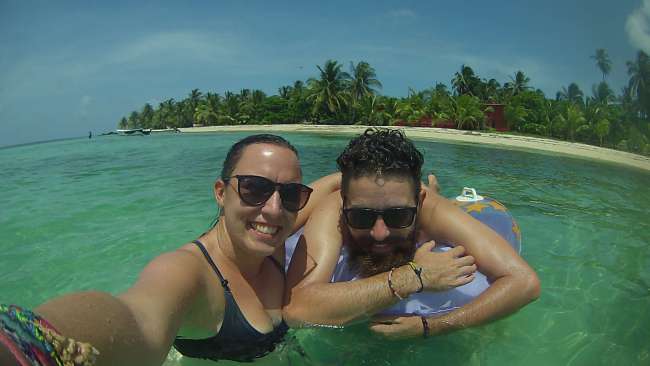
alpakaliebe
vakantio.de/alpakaliebe-tiniundtoemmiinsuedamerika
Troubles, Bad Luck, and Mishaps in Paraguay
Tshaj tawm: 10.05.2017
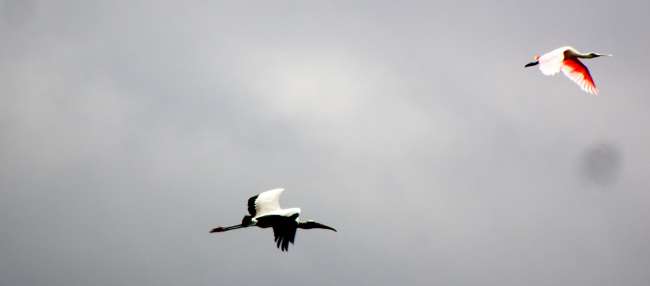

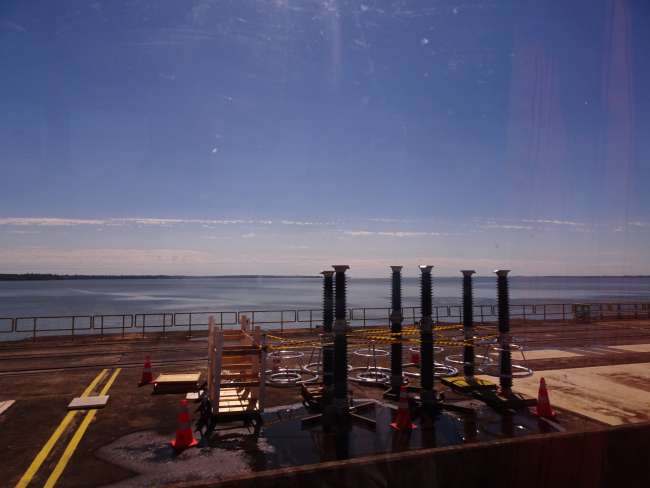
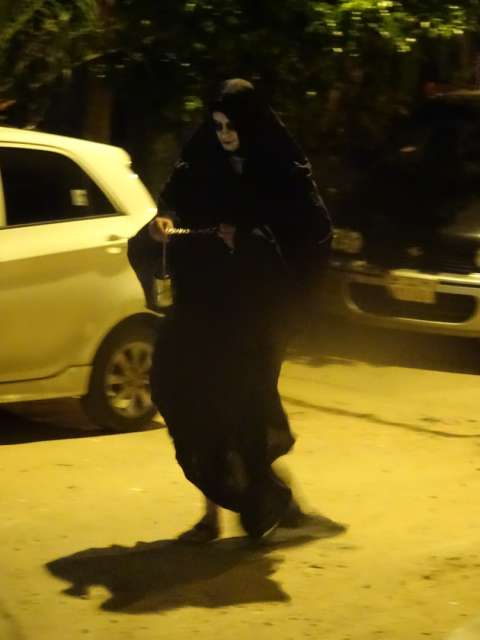
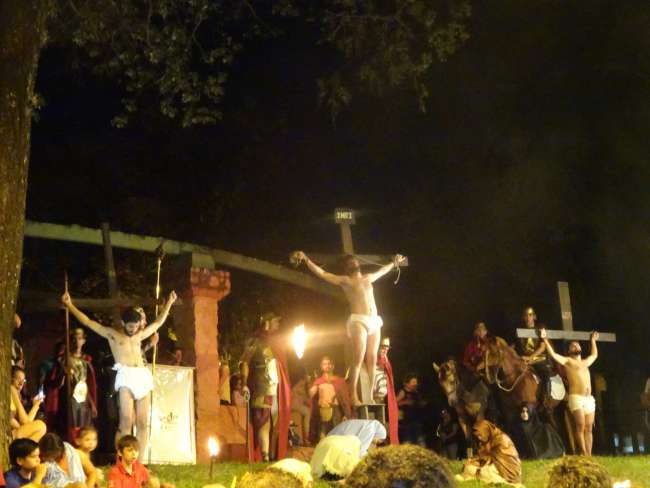
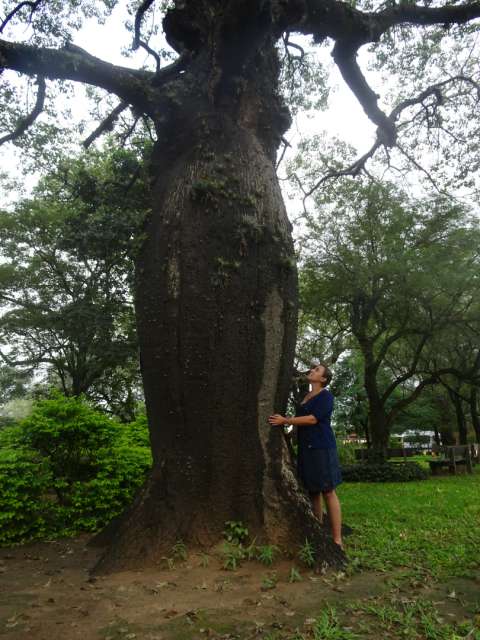
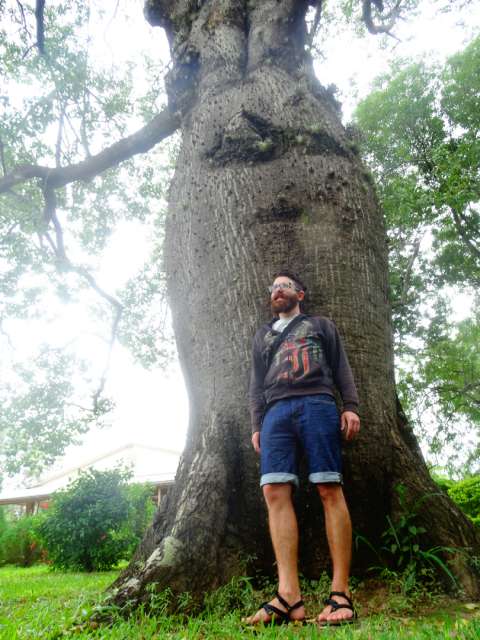
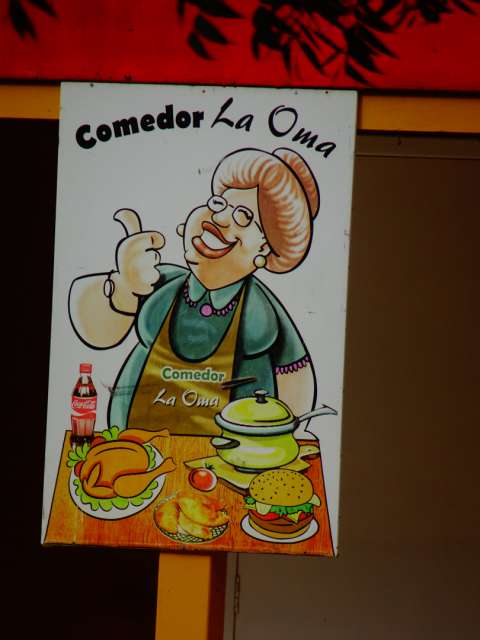
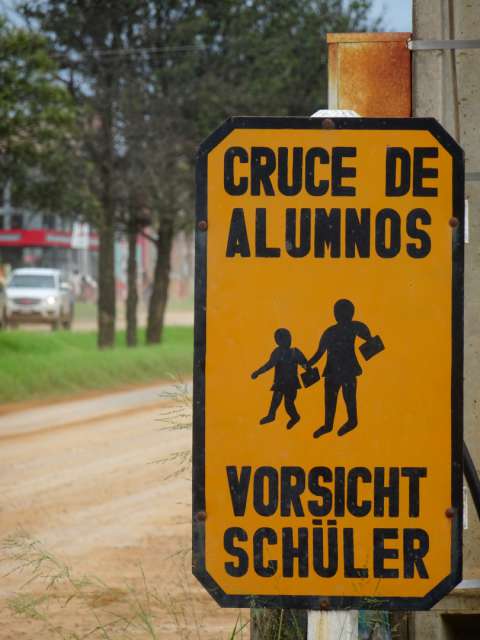
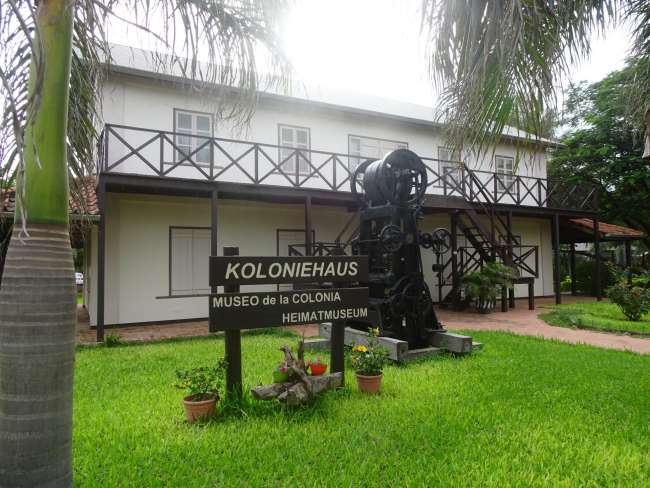
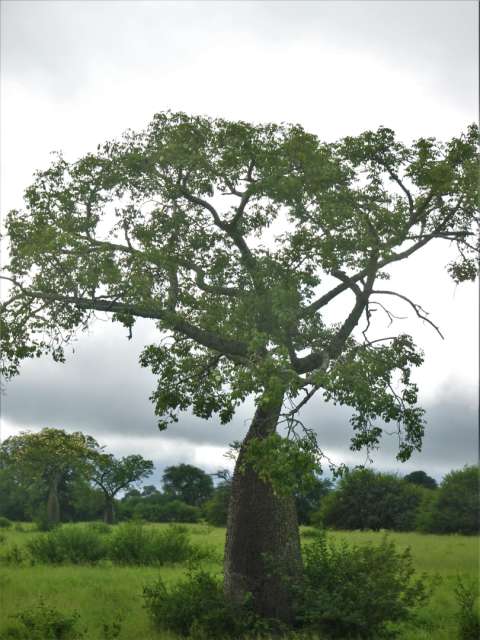
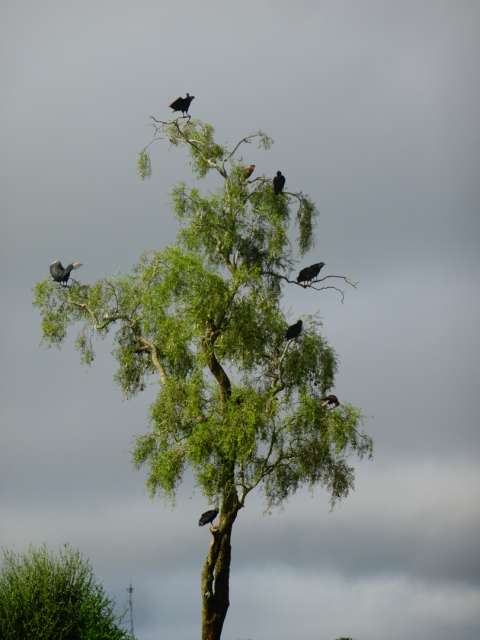
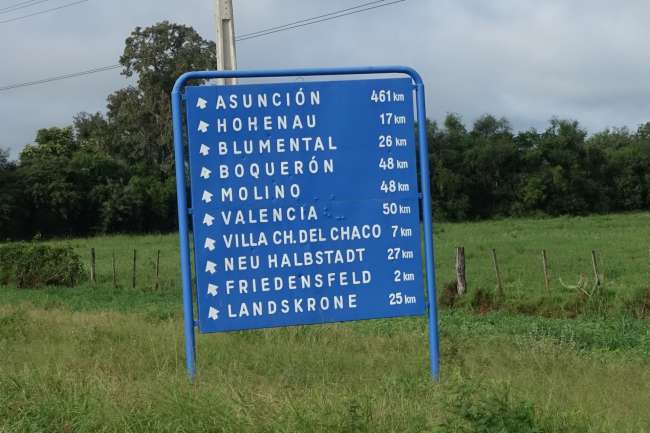
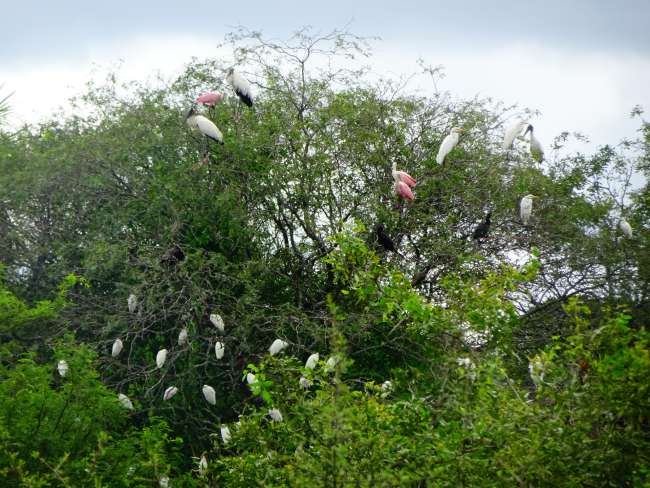
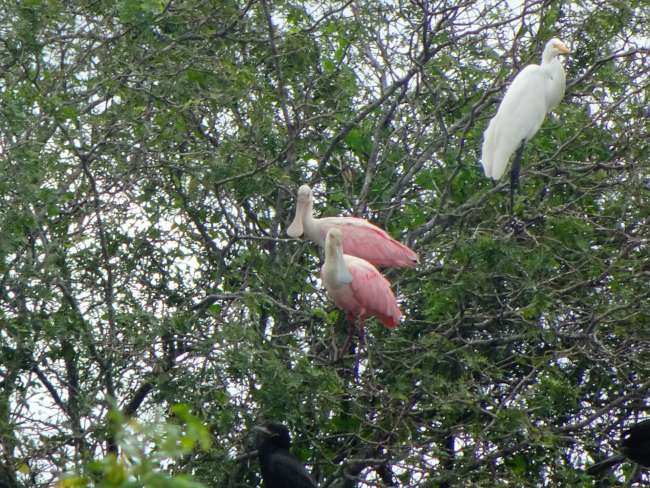
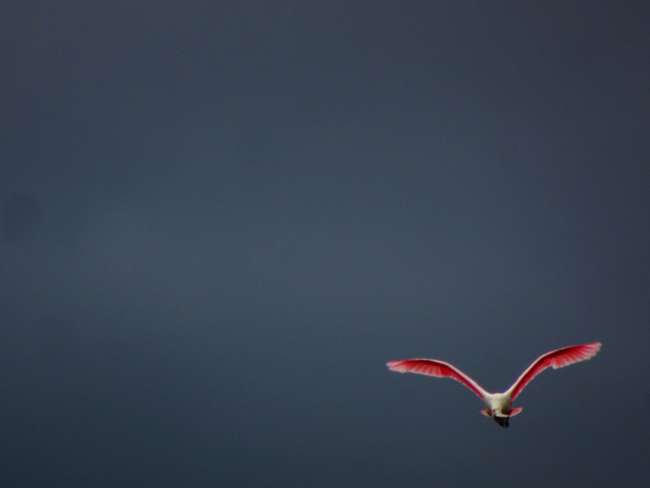
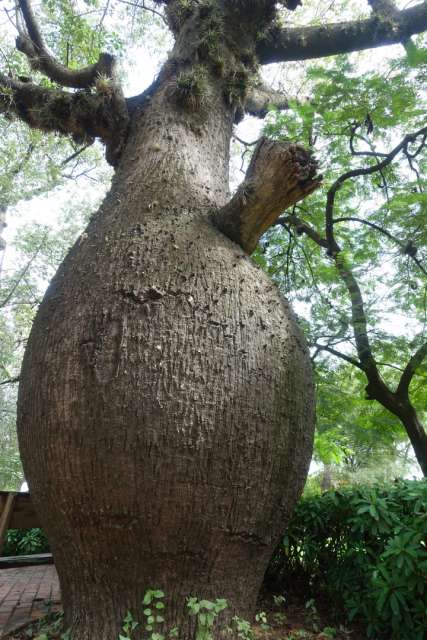
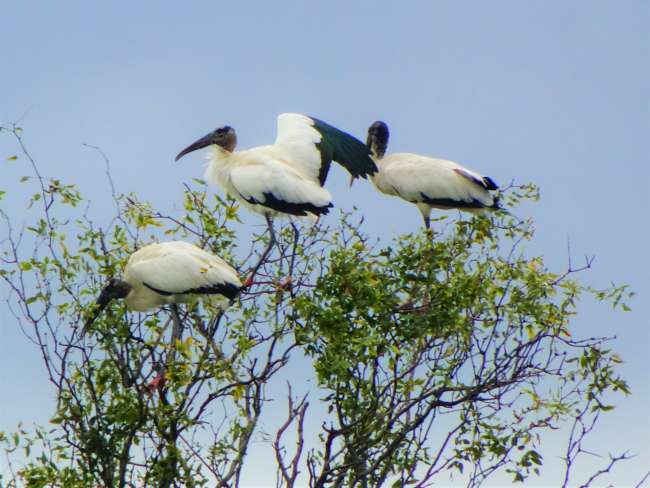
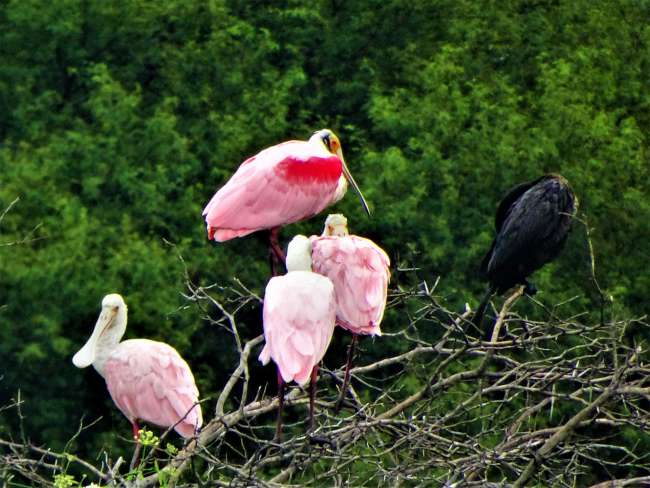
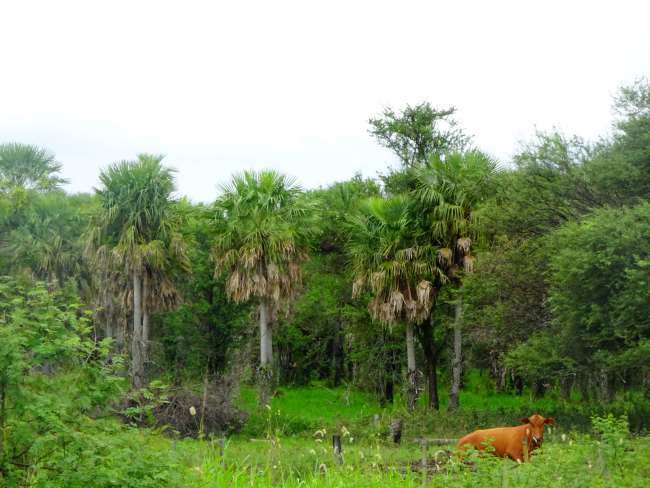
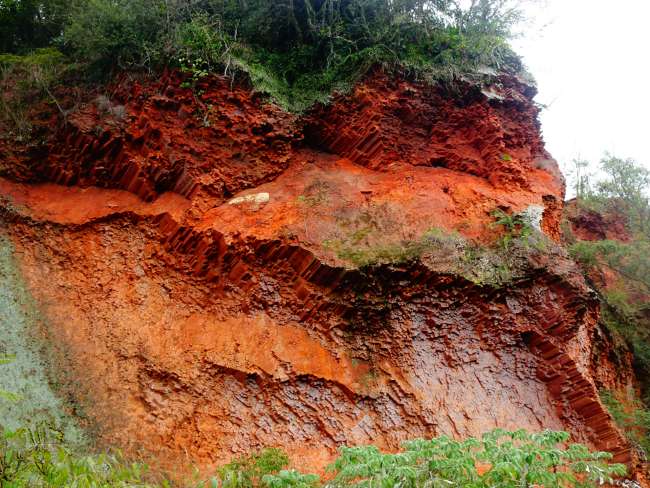
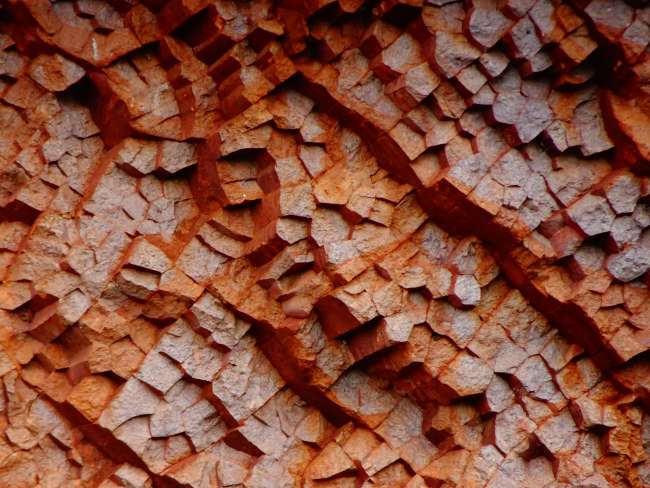
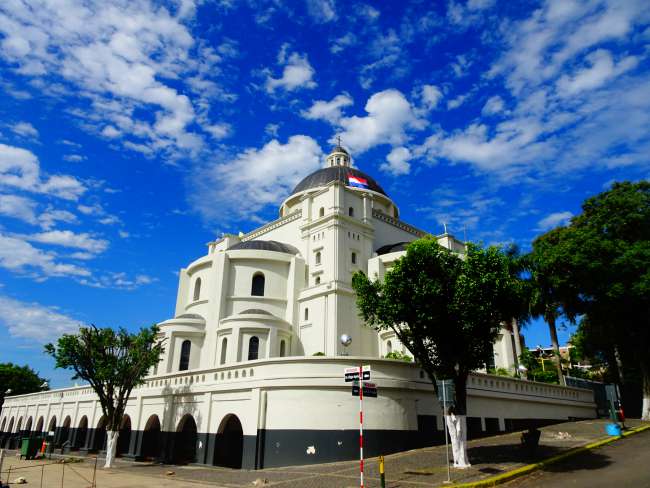
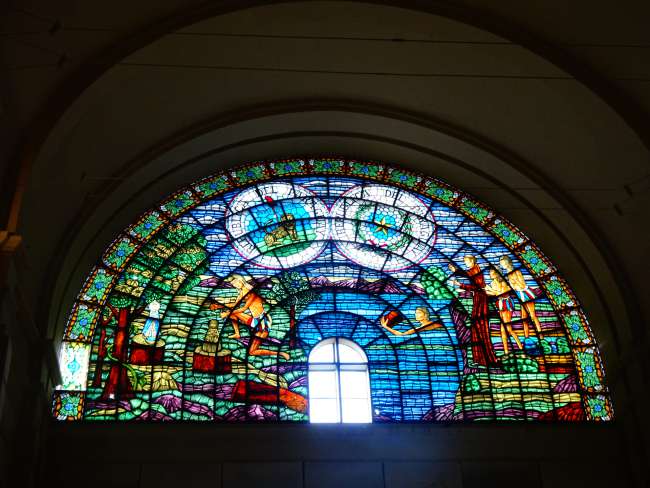
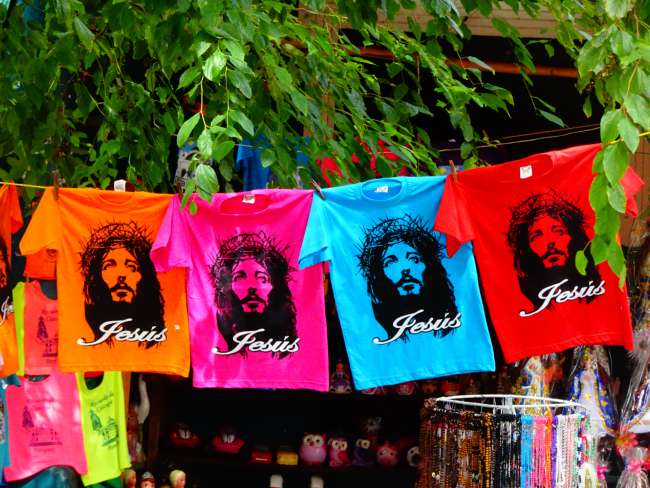
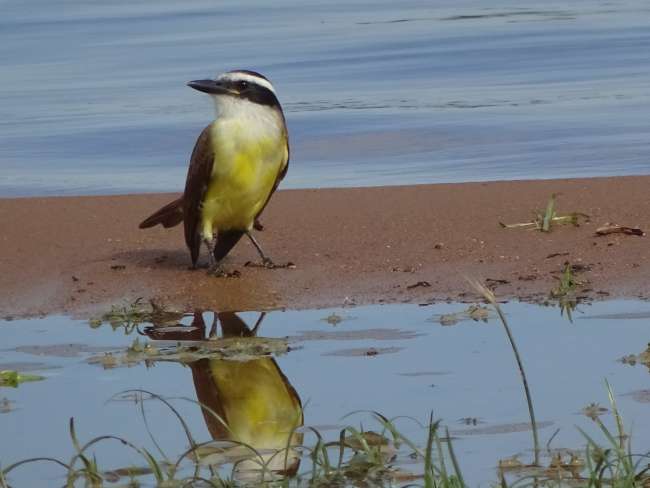
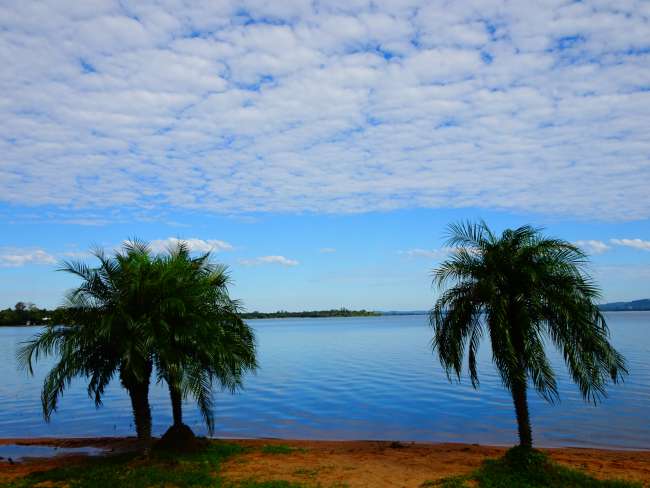
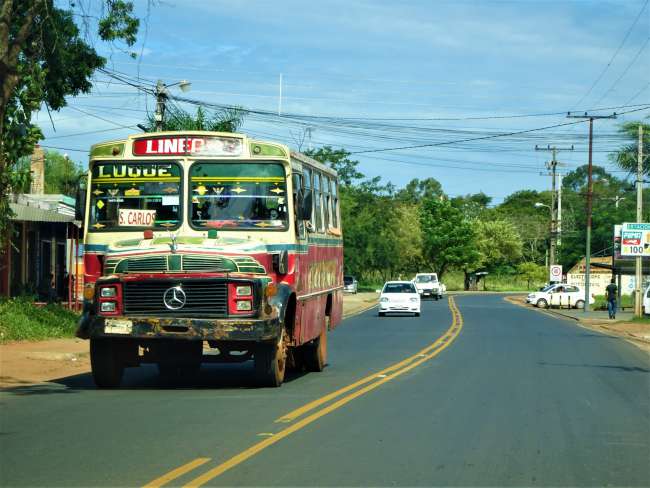
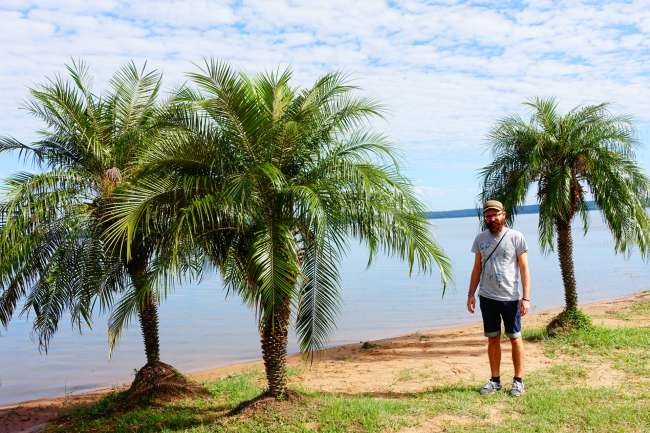
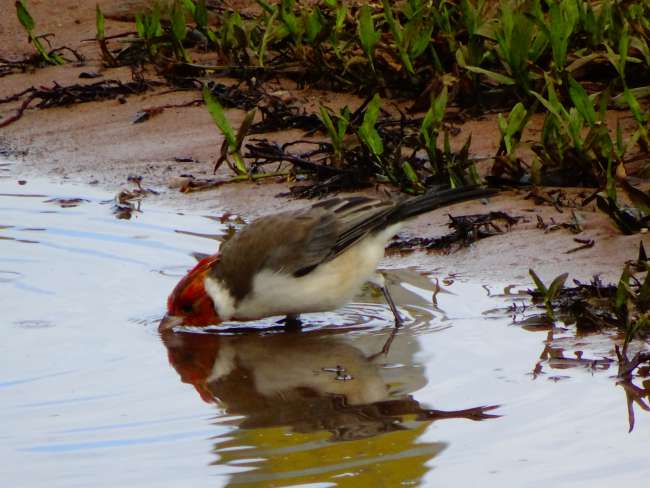
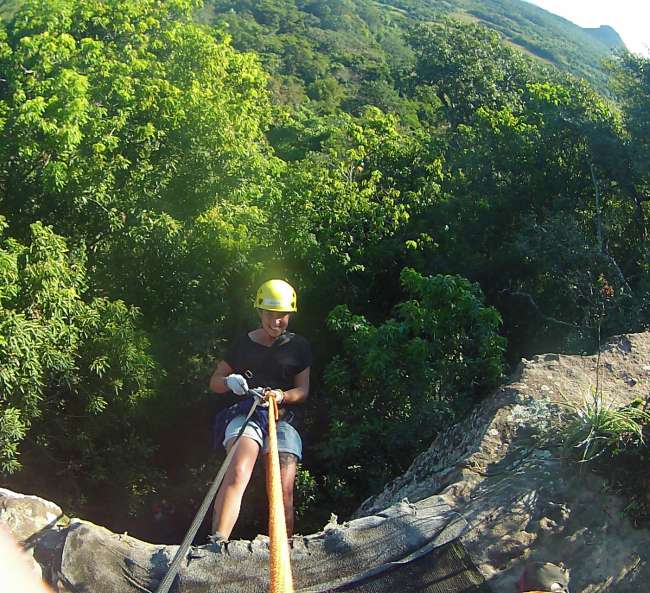
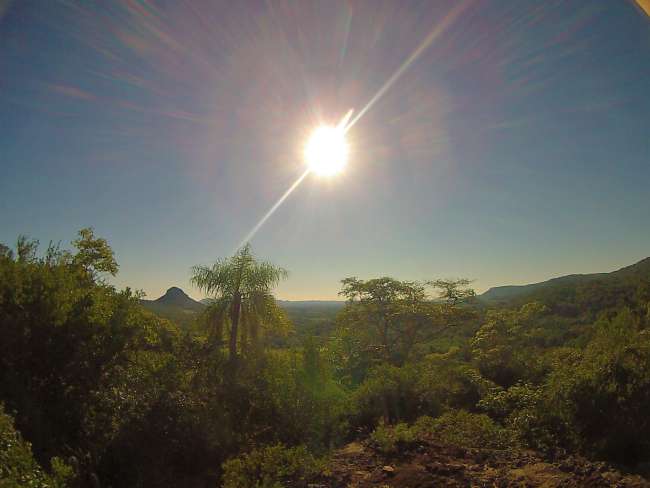
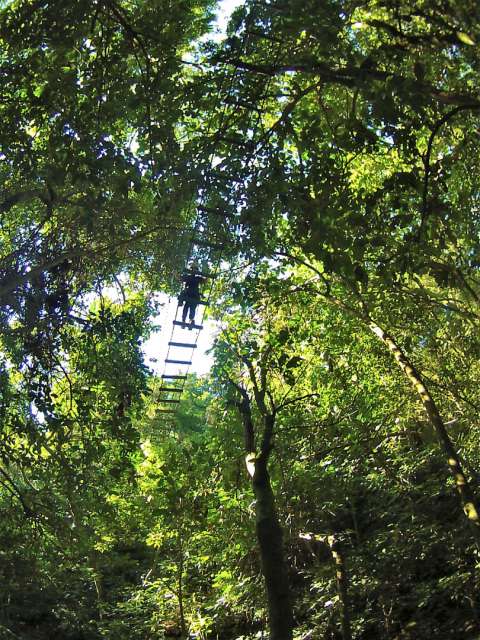
Sau npe yuav ntawv xov xwm
After our wonderful time with Steffi and Thilo in Uruguay and Argentina, we split up in Iguazú. Steffi and Thilo flew to Buenos Aires, while we took the bus across the border to Ciudad del Este, which is only 10 kilometers away. Our beloved Paraguay welcomed us back. Right after crossing the border, everything was chaotic again. Due to the crazy traffic, you see a huge number of motorcycles in Ciudad del Este. Especially motorcycle taxis, which drive recklessly through the streets, were something we saw for the first time here. They take every opportunity to weave through traffic and transport their often heavily loaded passengers from point A to point B. In general, there is nothing in Paraguay that cannot be transported on a scooter, so it is not uncommon to see families of four piled on one scooter. After checking into our small hotel, we first got bus tickets to Asunción for the next day, as during Semana Santa (Easter week) the whole of Paraguay is on the move to visit family. Fortunately, we managed to secure two seats on the best bus company. Then we took a city bus to the city center to visit the infamous shopping mecca. Here, you can find great deals on electronic devices, shoes, and clothing if you don't mind the fake products being sold to you if you don't know your way around. And indeed, the whole city resembles one giant market where you can get anything you want. While we had previously been able to leisurely stroll through all kinds of markets in South America without being hassled by vendors, here it felt more like being on an Egyptian bazaar, where you are approached from all sides, with every other vendor trying to sell you unnecessary products. But since we didn't really need anything, the prices in the reputable stores weren't significantly cheaper than at home, and the whole experience quickly became exhausting, we tried to take one of the buses back to the hotel. Unfortunately, the bus didn't turn in the right direction, so we had to get off several kilometers away and take a taxi home. The semi-blind and deaf taxi driver, of course, saw an opportunity to take advantage of us, as there were no other taxis around, and he overcharged us by a lot. Well, we were just glad to be back at the hotel and went to grab a bite to eat next to the bus station. Usually, you can eat quite well and cheaply at the bus terminals, but in this case, the food was unfortunately only cheap.
The next morning, we got up early because we wanted to visit the world-famous Itaipu Dam before continuing our journey. The dam is a binational project between Brazil and Paraguay on the Paraná River, primarily to generate electricity through hydropower. Until 2006, the hydroelectric power plant was the largest in the world and still holds the record for the highest annual energy production with 95 terawatt-hours per year, covering 75% of Paraguay's energy needs and 16.9% of Brazil's energy needs. In comparison, the Isar 2 nuclear reactor in Germany, with the highest annual production worldwide, generates only 12.4 terawatt-hours per year. Paraguay has another hydroelectric power plant that covers the remaining 25% of its energy needs. I find this absolutely remarkable, as Europe is pretty far behind in terms of renewable energy.
At the dam itself, we had a free guided tour on a bus that took us around the entire area, and in the air-conditioned cinema of the dam, we watched a super interesting film about the mammoth project. Of course, the environmental impact of the dam is considerable, as a lot of forest had to be cleared and approximately 40,000 people (mostly indigenous people) had to be resettled to make way for the gigantic reservoir, which permanently floods huge areas of rainforest and large waterfalls. As compensation, the states agreed to establish a total of 12 national parks in the area to preserve and protect the flora and fauna. However, illegal hunting and deforestation still occur because the vast areas cannot be sufficiently controlled. Nevertheless, the hydropower plant is incredibly impressive and probably the better solution for the environment when considering the long-term environmental impact of nuclear energy and coal-fired power plants. Here are a few numbers: the dam is 7760 meters long, the dam wall is 196 meters high, and the reservoir is about twice the size of Lake Constance, measuring 170 kilometers long and between 7 and 12 kilometers wide. Approximately 64 million cubic meters of earth had to be excavated, and approximately 12.6 million cubic meters of concrete were used. 3038 people are employed at the dam. By the way, Paraguay did not contribute a penny to the construction costs; it was all financed by Brazil. Paraguay pays off its 'debt' with electricity.
After our visit to the dam, we took the bus to Asunción, where we spent the Easter holidays. Just when I finally dozed off on the bus, I was suddenly awakened by unfamiliar hands on my face. It seems a local Paraguayan couldn't resist his curiosity about how a beard feels and took the opportunity to touch my beard while I was asleep 😊
Our hostel, 'Isla Francia,' is run by a French couple in their 50s and is known for its exceptional hospitality. We were warmly welcomed and invited to dinner with all the other guests on the first evening, which was prepared by the hostel father, who springs around like a squirrel on ecstasy until late at night and switches rapidly between French, Spanish, and English, often mixing everything up, sometimes even speaking a bit of German like 'Alles klar, Herr Komissar?' I found it quite exhausting because the other guests seemed to be just as communicative as me, and all of them were clearly better at speaking Spanish. So I preferred to retreat to our private balcony to enjoy the now significantly milder temperatures and to take a dip in the beautiful pool during siesta time when everyone else was resting. On Good Friday, we visited the famous passion plays in the San Jeronimo neighborhood, which reenact the suffering of Christ with numerous actors and take place in the alleys of the whole neighborhood. The audience is right in the middle of it and becomes automatic extras in the performance. I have to say, I've never experienced the Easter story so intensely before. We spent the remaining days calmly and comfortably, with occasional walks for ice cream and dinner. During these walks, we noticed numerous burned-out cars in the old town, which were not there during our first visit. The riots two weeks earlier must have been quite intense.
On Monday, the day finally came when we could pick up our rental car, which we wanted to use to explore the Chaco region and the area around Caacupé. The first hurdle was once again the taxi driver, who had no idea where to take us but was too proud to let Tina navigate him with GPS. So he had to ask for directions at every corner, only to realize that Tina was right. Absolutely annoying, but at least he didn't charge us for the extra time. When we arrived at Franz, our private car rental agency, we had to wait a few minutes for him in the living room until Tina spotted him through the window and exclaimed in surprise, "Oh dear, what kind of hippie is that?" As it quickly turned out, Franz was not a hippie, but he had injured his head the night before, which is why he was wearing a mighty turban. Apart from that, the Austrian expat helper was super nice and easily gave us his Mercedes all-wheel-drive SUV. Of course, I had to be the driver again, and in the first 2 minutes, I already realized that Mercedes and I could not become friends. Automatic transmission and two million buttons that I couldn't operate, and then there was this terrible lump that was poking into my back, which was unbearable. (Note from Tina: That was the massage seat :)
While Tina switched between laughing, comforting, and navigating, I drove towards our first destination, grumbling all the way. However, our first stop made me more reconciled for the time being, as I bought my very first mate thermos with a matching guampa and bombilla - it's beautiful!
After that, we continued on the chaotic streets of Asunción towards the Transchaco Highway, which connects the north and south over a distance of 835 kilometers and reaches the Bolivian border. The first 300 kilometers went smoothly and took us through beautiful palm landscapes and past the really poor settlements of Paraguay, where people have little more than their tattered shirts and pants and live in wooden huts with their children, dogs, and cows. At some point, the huge potholes in the middle of the road became more frequent, and about 60 kilometers before Filadelfia, the Swiss cheese section began, as the German-speaking Paraguayans lovingly call it. Here, the road consists more of holes than actual road, and the comfortable average traveling speed of about 90 km/h had to be drastically reduced just to avoid potholes occasionally. Now, I was actually quite grateful for the big Mercedes. Shortly before Filadelfia, we turned onto the old road to take a look at the Lomo Plata Colony. However, when the drizzle started, I already realized that driving on the dirt road would be a bit tricky. But we didn't think much of it and eventually reached Filadelfia quite quickly. So, now we just had to make the 20 kilometers to the booked estancia, and our Chaco adventure could begin. Wrong! Out of the 20 kilometers, we made it exactly 30 meters until our super awesome off-road Mercedes got stuck in a ditch. The dirt road was so muddy and wet that I slid across the road like I had never experienced in the snow and ice at home. No control over the vehicle whatsoever. The skills I learned to get out of snow didn't help either, and so our last chance was to combine the 180 horsepower of the all-wheel drive with Tina's push from behind. And behold, the damn car moved out of the ditch. I tried to turn around in the middle of the road in about 6 moves to then drive the worst 30 meters of my car life on the wrong side of the road because I couldn't even get back to the right side. And just as I was doing that, two local pickups came swerving towards me at about 80 km/h, and while cursing and praying simultaneously, I managed to avoid them and thankfully reached the paved road unscathed. Our path immediately led us to the only hotel in Filadelfia, where according to the smelly morel at the reception, everything was fully booked, as a desperate man in front of us got to experience. That evening, the mud-spattered Tina was definitely my superhero, who more than deserved her delicious cordon bleu with pineapple in the fantastic hotel restaurant.
Before dinner, Tina briefly informed the estancia about our situation, and to our surprise, the German-speaking wife of the property actually came over to greet us in the evening. She assured us that it was the right decision for us to stay in the hotel because even experienced drivers often have serious accidents or get stuck on the road when it rains. The locals call the road condition 'soapy' because you skid around uncontrollably, just like on slippery ground. She offered to pick us up at the estancia the next day, but since we had checked into the hotel for three days and the weather forecast was not very promising, we decided to stay at the hotel.
Speaking of weather: the Chaco region is extremely dry, and there are very few rainy days in a year, usually just a few drops. Of course, that's when we come here, and it rained heavily, as it did on our first night. Most of the year, the temperatures here exceed 40 degrees, but when we were there, it only reached 18 degrees. But we didn't give up hope, because the next morning greeted us with sunshine. We explored Filadelfia and visited the beautifully laid-out Mennonite Heritage Museum, which enlightens visitors about the history of the Mennonites and the Fernheim Colony, to which Filadelfia belongs. At the same time, the museum serves as a tourist information center and is run by an extremely friendly Mennonite lady. After our brief and creepy encounters with the Mennonites living in Bolivia and the reports we had read, we were very skeptical about the topic. But here, we found very open-minded, educated, and modern people, whose lives are indeed very strongly influenced by religion and whose interpretation of the Bible is certainly debatable in some areas. Nevertheless, I was pleasantly surprised by how a 'people' that has been persecuted for centuries, constantly having to leave their homes and start over under the most adverse conditions, can achieve so much while preserving their culture and values without closing themselves off from modernity. The Mennonites were mainly persecuted because, on the one hand, they were consistent pacifists who refused military service, and on the other hand, they had significant economic success due to their hard work and resourcefulness. You can see this quite clearly here in the colony because they have managed to build a small empire in an area that was considered uninhabitable, which now ranks among the most modern agricultural facilities in the world. This includes not only livestock farming and intelligent water treatment in an area where there is hardly any water, but also research facilities for organic crops and food. In addition, the Mennonites have implemented a fantastic educational, social, and healthcare system with very good schools, the best hospital in Paraguay, a psychiatric hospital, and numerous other institutions, all of which are financed collectively. They have created a small state within a state that includes and provides employment for the indigenous tribes of the region and the rest of the population, rather than excluding them. Nowadays, there are even more Paraguayans than Mennonites living in the colonies. They have an agreement with the state that exempts them from military service, so it seems that they have truly found a new home in Paraguay. I must admit, I am quite impressed by the achievements and determination of these people.
After our visit to the museum, we strolled through the city for a while and found it amusing to see cheese faces with blond hair everywhere, conversing in Low German and High German. We naturally also checked out the well-equipped supermarket, which had many products that reminded us of home. As a conclusion of the day, we went to a small arts and crafts shop where you can buy traditional crafts from the local indigenous tribes, and because it was so nice, we both got a new belt, and Tina got a handbag made from a plant fiber that grows here.
We hadn't given up hope of being able to visit the beautiful salt lagoons on the last day, where you can admire hundreds of unique birds and, of course, flamingos. After all, that's why we came here. But in the morning, that dream was shattered because it was pouring rain, and there were 40 kilometers of sandy road between us and the lagoons. Disappointed, we spent the deluge in bed watching series before heading back south the next morning. At least here, we could stop by the roadside from time to time and admire the beautifully blooming bottle trees that dominate the landscape, and we also managed to capture some of the wonderful birds of the Chaco with our camera.
After the first 200 kilometers, bad luck caught up with us again. Tina was behind the wheel, and suddenly the steering stopped working properly. We just managed to pull over and try to identify the problem. While we spent 10 minutes trying to find the lever for the hood, and then another 20 minutes looking for the tank for the power steering fluid, the trucks and cars were passing us only a few centimeters away, which didn't improve the mood either. No labels, no information in the owner's manual... it was exasperating... this Mercedes was driving me crazy! There should be a gas station 10 kilometers away. We thought they would help us there, and 10 kilometers should be manageable without power steering. I took over the steering and managed to get our behemoth back on the road relatively smoothly, although I had to use all the muscle power I acquired from lifting suitcases. 10 kilometers later, we saw the promised gas station on the left side, or rather, what was left of it. Like in driving school, I turned on my blinker 300 meters before, checked the rearview mirror, where there was a car right behind me, and reduced speed. 20 meters before, I checked the mirror again, all clear, the car behind me was waiting. With the remaining speed of 20 km/h, I tried to make the turn into the entrance, and what does the idiot behind me do? Overtake! Well, he had a pretty good reaction, but almost crashed into us and went into the next ditch while swerving to avoid us. With racing heart and ringing in my ears (Tina's 180-degree eagle-eye view and her loud voice also helped me react quickly), I managed to stop in the entrance.
The gas station consisted of a few steel beams, a few chickens, 4 stray dogs that were not very well behaved and wanted to devour Tina (actually just play, but Tina perceived it differently), a little dirty boy, and a man talking on a mobile phone from the 18th century. 'At least something,' we thought and asked the man, who made us wait for another 10 minutes, if we could make a phone call. For 10 Guarani, he agreed, and then Tina explained to Franz on the phone where to find the power steering fluid tank. Found it, opened it, poured the fluid in, and realized that it was full. Damn! After another 20 kilometers, we finally reached a proper gas station where the boss and two employees immediately took care of us and confirmed our suspicion that the journey back home was no longer possible. Even though it seemed to go well on the straight road, driving in Asunción's city traffic would be suicidal. So, we called Franz again, who had already suspected something like this and had already informed the towing service to be ready. After 3.5 hours, the said towing service arrived, much to our delight, in the form of a toothless old man who tried to explain things to me about how I had to help but unfortunately, I couldn't understand a word of his mumbling, to the detriment of us all. Tina asked him to speak Spanish because we didn't understand Guarani. Somehow, we managed to get the super awesome Mercedes onto the truck, and we could start the 200 km journey to Asuncion. Despite the language barrier, the driver was very talkative. I didn't understand a word, but at some point, Tina started to get the hang of it. He always wanted to know which workshop we wanted to go to, casually praised his good education, and didn't miss an opportunity to inform us how bad our Spanish was, wondering whether important things weren't taught to us in Germany. Since we couldn't resolve the workshop problem and the driver kept calling me 'Fran,' I had to climb onto the truck at the roadside once again to get Franz's phone number from the car. With the driver's cell phone, we called Franz again, who unfortunately couldn't understand the good driver either, but thankfully he made the driver understand the way to the workshop. Eventually, the odyssey ended, Franz parked us at a hotel, and to top it all off, I developed a sore throat and a stuffed nose in the last 3 hours.
In the morning, the suspicion became certainty: I had caught a cold. Nevertheless, even after we got our freshly repaired car back, we still wanted to do a little something. So, we strolled through the city of Luque, which is world-famous for its beautiful silver and gold craftsmanship, and visited the cathedral and the Cerro Koy National Park in the pottery town of Aregua, where there are very special rock formations that you can only find in 3 places in the world. Afterwards, except for a walk along Lake Ypacarai and a visit to the Pilgrimage Cathedral in Caacupé, the pre-booked hotel was the last stop of my stay in Paraguay, as my cold forced me to stay in bed. At least I was finally rid of the 'beloved' Mercedes. Tina still went on beautiful excursions in the area to a climbing and canopy park and explored the beautiful villages around Caacupé.
Back in Asunción, we had to finally say 'Adios' to our beloved Paraguay and hopped on a plane to Nicaragua!
Sau npe yuav ntawv xov xwm
Teb
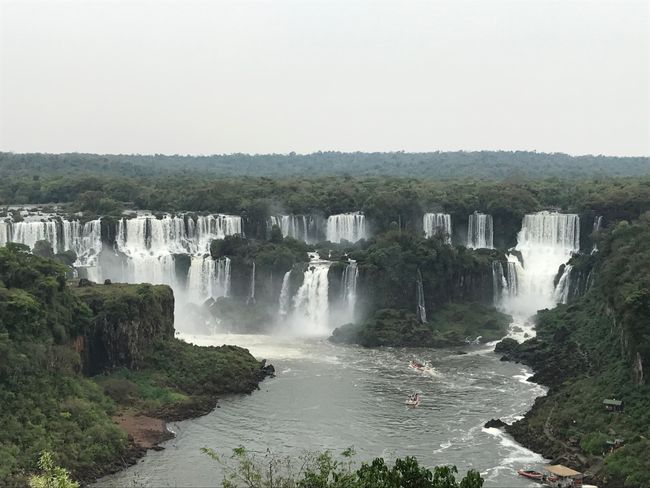
Daim ntawv qhia txog kev mus ncig Paraguay
